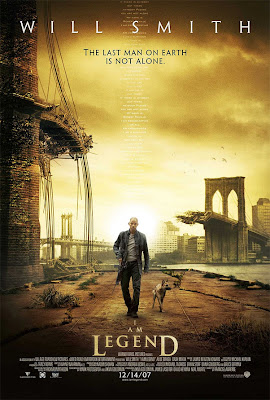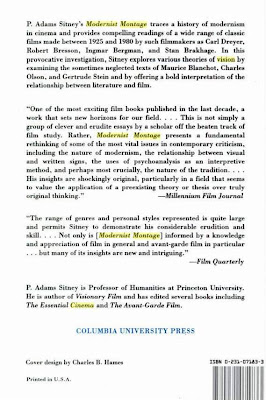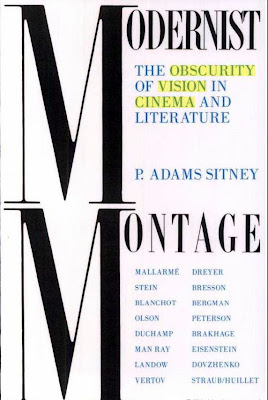A language, by definition, is a semiotic process through which thought may be conveyed, but a language system (or linguistic system) enables a response to that thought using the degrees and kinds of signs and signifiers produced by the language. Film uses not only words, but also different kinds of shots, angles and speeds; therefore, while the audience can react to a film's semantic intent, that audience cannot address its concerns regarding the film in the same language the film used to convey its argument. For that reason, Robert Stam, Robert Burgoyne, and Sandy Flitterman-Lewis advance Christian Metz’s argument that while the means by which film expresses itself to its audience constitutes a language, it cannot constitute a linguistic system. Metz argues that
one might call ‘language’…any unity defined in terms of its matter of expression…Literary language, in this sense, is the set of messages whose matter of expression is writing; cinematic language is the set of messages whose matter of expression consists of five tracks or channels: moving photographic image, recorded phonetic sound, recorded noises, recorded musical sound, and writing…Thus cinema is a language in the sense that it is a ‘technico-sensorial unity’ graspable in perceptual experience. (37)
The language of cinema, as a result, cannot be answered by the language of literature because the two systems use different modes of expression. In support of this point, Raymond Bellour argues that film is the "Unattainable Text":
the film-text, unlike the literary text, is not ‘quotable.’ Whereas literature and literary criticism share the same medium – words – film and film analysis do not. While the film medium entails five tracks – image, dialogue, noise, music, written materials – the analysis of the film consists of a single track – words. Critical language is therefore inadequate to its object; the film always escapes the language that attempts to constitute it. (56)
To appropriately respond to a film, consequently, one would have to generate a film of his or her own using the same methods employed by the director in a manner dialogic to the film being addressed, and this is problematic for most of the viewing audience. In spite of our inability to respond to a film in its language through natural means of discourse, understanding the nature of film semiotics makes us critically aware of the language being used, and that results in an enhanced understanding of the way in which film is representative of cultural and counter-cultural values.
The book is divided into five parts, the first of which develops the terminology and history of semiotics in a chapter entitled "The Origins of Semiotics." It begins with an introduction of two seemingly interchangeable terms: semiology and semiotics. The former is defined by Ferdinand de Saussure as:
A science that studies the life of signs within society is conceivable; it would be a part of social psychology, I shall call it semiology (from Greek semeion ‘sign’). Semiology would show what constitutes signs, what laws govern them. (Course in General Linguistics 4)
The latter is derived from Charles Sanders Pierce, who proffered a similar definition of the term (4). Regardless of this semantic distinction in terminology, Stam et al. explains that the "sign is for Saussure the central fact of language, and the primordial opposition of signifier/signified constitutes the founding principle of structural linguistics" (8). The dichotomy between these two is reconciled in the following formula:
The identity of any linguistic sign is determined by the sum total of paradigmatic [involving choosing] and syntagmatic [involving combining] relations into which it enters with other linguistic signs in the same language system. (9)
The Paradigmatic is defined as "a virtual or ‘vertical’ set of units which have in common the fact that they entertain relations of similarity and contrast," and the Syntagmatic4 deals with "the sequential characteristics of speech, their ‘horizontal’ arrangement into a signifying whole" (9). This formula loosely resembles the linguistic system of Tagmemics, wherein diction and syntax are construed in a slot-plus-class (syntagm-plus-paradigm) relationship, which enables them to be better understood in their functional grammatology.
The use that Stam makes of this in its relationship to cinematic forms lies in the concept of translinguistics, which entails a "theory of the role of signs in human life and thought" (13), in that signs have multiple significances depending on the views of conflicting classes. This multi-accentuality4 is "the capacity of the sign to elicit variable social tones and ‘evaluations’ as it is deployed within specific social and historical conditions" (13). In contrast to Saussure’s structuralism, Derrida proposed a vision that went beyond it--post-structuralism. This line of thought "demonstrated a thoroughgoing distrust of any centered, totalizing theory, a radical skepticism about the possibility of constructing a metalanguage which might position, stabilize or explain all of the other discourses, since the signs of the metalanguage are themselves subject to slippage and indeterminacy" (23). By entailing "a critique of the concepts of the stable sign, of the unified subject, of identity and of truth" (23), post-structuralism
exists in both continuity and rupture with structuralism. It shares the structuralist premise of the determining, constitutive role of language, and generally continues within the structuralist problematic, especially the assumption that signification is based on difference. At the same time, it rejects structuralism’s ‘dream of scientificity,’ its hopes of stabilizing the play of difference within an all-encompassing master-system. (27)
The Saussure-Derrida disagreement’s significance to film is discussed in the second chapter entitled "Cine-Semiology," in which Christian Metz is introduced by way of transition.
The question which oriented Metz’s early work was whether the cinema was Langue (language system) or Language (language) and his well-known conclusion…was that the cinema was not a language system but that it was a language. (34)
His argument is that "langue is a system of signs intended for two-way communication, while the cinema allows only for deferred communication" (34). In today’s world, however, this assertion will eventually have to be rethought because it does not allow for interactive cinema (like porn chatrooms) or Internet conference calling where role play is being done by either party—either of which can technically be considered film-making, especially if the parts of dialogue and imagery are manipulated to produce a contrived result. Metz further argues that cinema is not a language system because "it lacks the equivalent of the arbitrary linguistic sign," replacing it instead with a ‘motivated’ sign. So, the relationship between signifier and signified differs from literature to film (35). Metz argues against the idea that the camera/cinematic shot is like the word while the sequence is like the sentence. He states as evidence that "(1) shots are infinite in number…(2) shots are the creations of the film-maker…(3) the shot provides an inordinate amount of information…(4) the shot is an actualized unit [meaning that it generates an exact representation of its intended meaning]…(and) (5) shots, unlike words, do not gain meaning by paradigmatic contrast with other shots that might have occurred in the same place on the syntagmatic chain" (35-6). Also, cinema "does not constitute a language widely available as a code" (35), for while all speakers of English can produce English, not all can produce the talent, training and access produced by filmic utterances (35). Again, this would have to be qualified in respect to advances in technology that put Internet cameras on everyone’s desktops or enabled lightweight camcorders to be used in independent film-making efforts like The Blair Witch Project. Stam argues further that language and film are both discursive "through paradigmatic and syntagmatic operations" (37).
Language selects and combines phonemes and morphemes to form sentences; film selects and combines images and sounds to form syntagmas, i.e. units of narrative autonomy in which elements interact semantically. (37)
The idea that there was one grand syntagmatic code, moreover, was refuted by others who argued that he was setting up a system too rigid to be viable. In response, Metz modified his argument to allow room for other cinematic codes. Stam explains that
like any artistic language, the cinema manifests a plurality of codes. In cinema, numerous codes remain constant across all or most films; unlike language, however, film has no ‘master code’ shared by all films. Filmic texts, for Metz, form a structured network produced by the interweaving of specific cinematic codes, i.e. codes that appear only in the cinema, and non-specific codes, i.e. codes shared with languages other than the cinema. (48-9)
The sense Metz makes of these codes, to give meaning to the plot of any given film, is discussed in the third chapter entitled "Film-narratology." Within this chapter, Stam explains the means by which the idea of a lengthy feature film is sold to an audience.
Metz argued that the organization of images into a narrative was one of the most important ways that film was like a language. The Grand Syntagmatic sought to designate and classify the specifically narrative segments of film language, which Metz understood in terms of sequences of shots, called syntagmas. These eight syntagmas [see footnote above], which were distinguished primarily through editing, expressed the spatial temporal and logical connections that form the universe of the fabula. (79)
Implicit in the need for a cohesive plot structure driven by a recognizable and powerful theme lies the necessity for these syntagmas to be sutured, or stitched, together in a way that enhances the flow of the film and generates the realism necessary for the audience to maintain credulity. The way in which those shots are sutured together is another form of communication between the film and its audience, but it is not a dialogue any more than the actors on the screen are influenced by the mood of the spectators sitting in the theater5. By choosing how to cut the story the film is trying to relate to the viewer, the director decides how that story is going to speak to the outside world.
That the outside world responds to film in a certain way is predicated upon its having been pre-conditioned through an innate desire to find the self in the gaze of the other. The fourth chapter, entitled "Psychoanalysis," describes one of the aims of psychoanalytic film theory as "a systematic comparison of the cinema as a specific kind of spectacle and the structure of the socially and psychically constituted individual" (123). Stam explains
If psychoanalysis examines the relations of the subject in discourse, then psychoanalytic film theory meant integrating questions of subjectivity into notions of meaning-production. Moreover, it meant that film-viewing and subject-formation were reciprocal processes: something about our unconscious identity as subjects is reinforced in film viewing, and film viewing is effective because of our unconscious participation. Moving from the interpretation of individual films to a systematic comprehension of the cinematic institution itself, some film theorists saw psycho-analysis as a way of accounting for the cinema’s immediate and pervasive social power. For them the cinema ‘reinscribes’ those very deep and globally structuring processes which form the human psyche, and it does so in such a way that we continually yearn to repeat (or re-enact) the experience. (124)
The idea that individuals can be influenced by films that mirror their latent desires within a broad range of their birth culture is interesting in the sense that it defines the culture as the macrocosm of the individual. It further seems to explain the voyeurism and vicarious living undergone by each audience member who sits alone surrounded by a crowd of other people who are alone, too. Theaters, therefore, are not social gathering places in the sense of a community’s coming together to enjoy a shared experience. They are, rather, places in which the lone individual, even if surrounded by his or her friends, can experience nascent predilections and explore formative moments within or outside of the safety of his or her own cultural norms. Spectators are able to do this as individuals either because they have already developed beyond the confines of their own understanding of the world and, therefore, are open to the suggestions of others that lay outside their realms of experience, or because they have yet to grow beyond their earliest attachments and rediscover those within the context of film.
This idea of the self as both a part of culture and as an autonomous unit with a very specific inner sense of identity helps us recognize the effect any given sequence of images may have upon us and distinguish the roles played by those images in relation to dominant cultural values. The book concludes with a chapter entitled "From Realism to Intertextuality," which lists the Comolli and Narboni taxonomy of the possible relations between a film and the dominant ideology of the culture in which the film was made. These include:
1) Dominant films, i.e. those films thoroughly imbued with dominant ideology
2) Resistant films, which attack the dominant ideology on the level both of the signified and of the signifier
3) Formally resistant films, those films which, while not explicitly political, practice formal subversion
4) Content-oriented political films, explicitly political and critical films...whose critique of the ideological system is undermined by the adoption of dominant language and imagery
5) Fissure films, i.e. films which superficially belong to dominant cinema but where an internal criticism opens up a ‘rupture’
6) Live cinema I, i.e. films depicting social events critically but which fail to challenge the cinema’s traditional ideologically conditioned method of depiction
7) Live cinema II, direct cinema films which simultaneously depict contemporary events critically and question traditional representation (196)
In each of these film types, there is a means for the spectator to either identify with or rebel against the image offered. The choice the movie offers is not necessarily compatible with the spectator’s ability to answer back with the language of the ideology, just like there is no possibility of the spectator’s being able to answer back in the language of the cinema. However, the spectator’s reaction to those choices helps that spectator define his or her place in that culture in comparison to or contrast with the values being witnessed. The signs and signifiers of the film media can, therefore, be accessed and responded to even though they engage the audience in a language the audience itself cannot speak.
Works Cited
Stam, Robert, Robert Burgoyne, and Sandy Flitterman-Lewis. New Vocabularies in Film Semiotics: Structuralism, Post-Structuralism and Beyond. New York: Routledge, 1992.



















